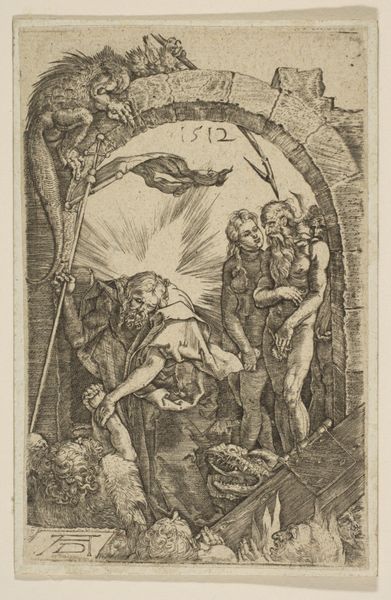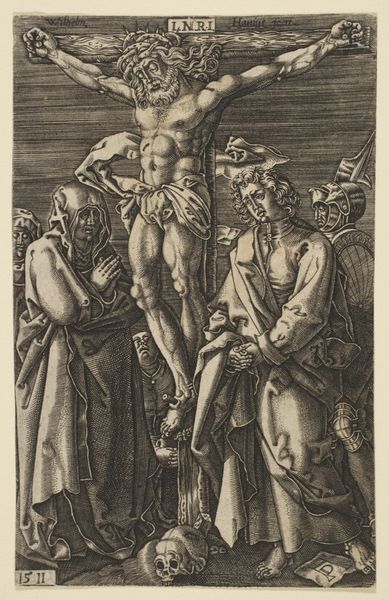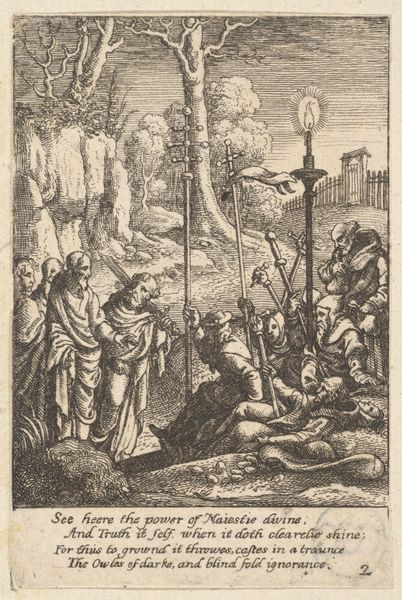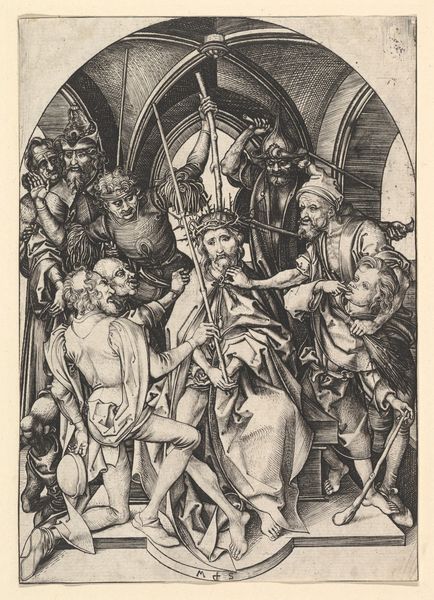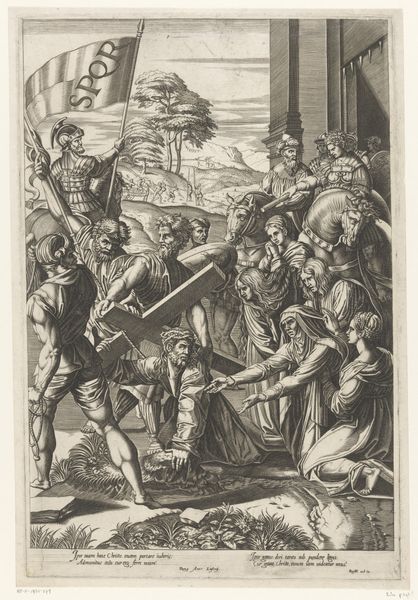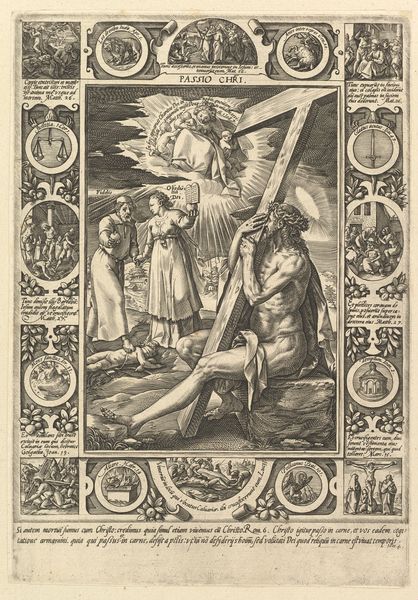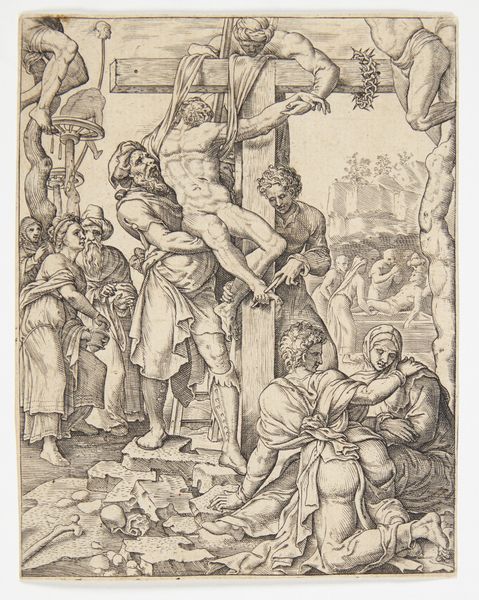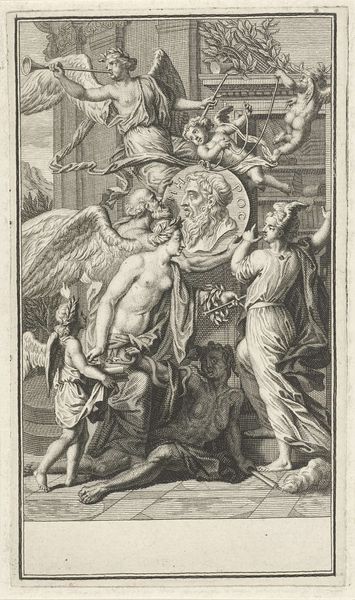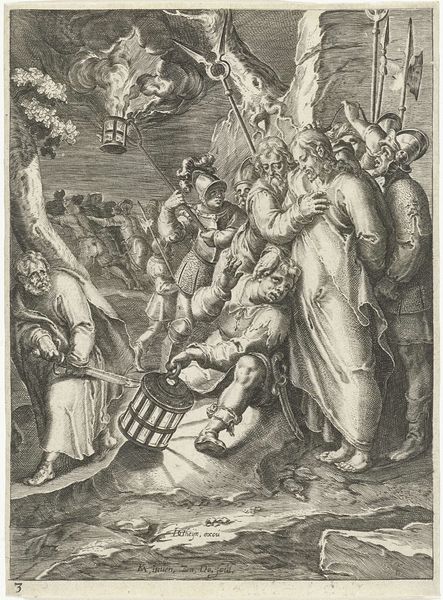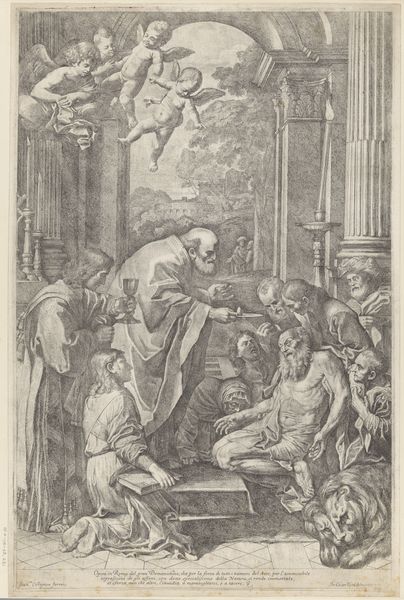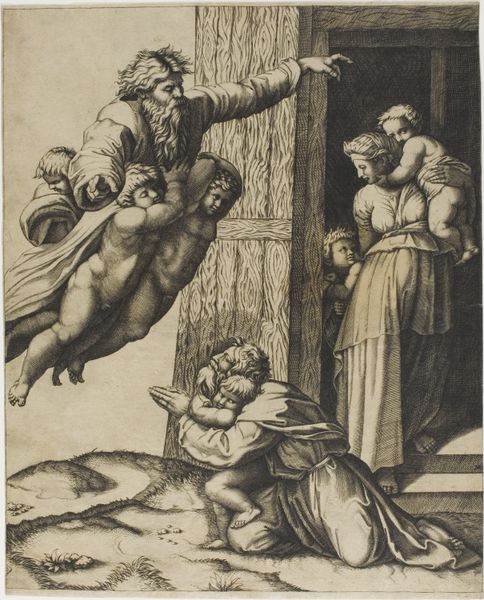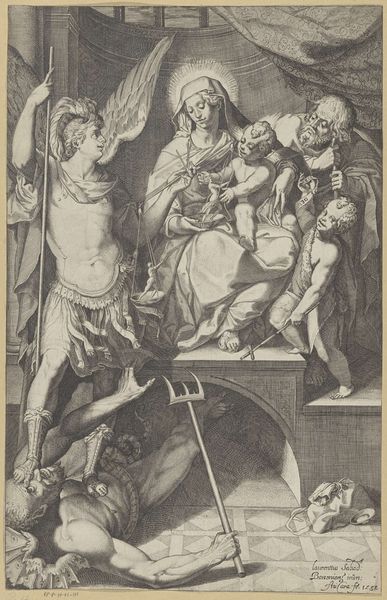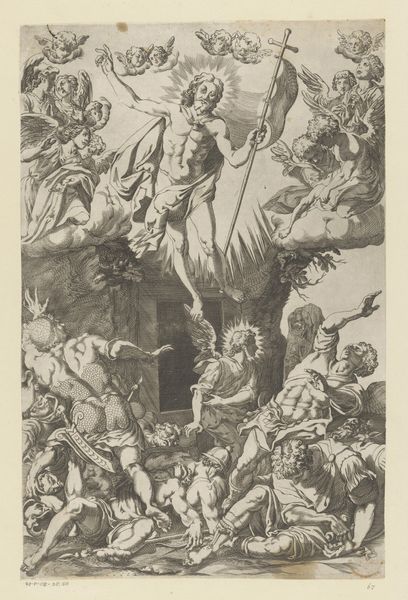
drawing, print, engraving
#
drawing
#
byzantine-art
# print
#
figuration
#
line
#
history-painting
#
northern-renaissance
#
nude
#
engraving
#
christ
Dimensions: Sheet: 4 11/16 × 3 1/16 in. (11.9 × 7.7 cm)
Copyright: Public Domain
Curator: Dürer's "Christ in Limbo, from The Passion," created in 1512, is an engraving teeming with layered narratives of salvation and spiritual struggle. It's currently housed here at The Metropolitan Museum of Art. What are your initial thoughts? Editor: Woah, total chaos! I see writhing bodies, mythical creatures...it feels like a divine jailbreak, if that makes sense. I get a strong sense of claustrophobia and the need for redemption, like a dark fairytale. Curator: That’s perceptive. This print captures Christ’s descent into Limbo, the realm where righteous souls awaited his arrival. Observe how Dürer positions Christ, bursting with light as he rescues souls from the clutches of monstrous figures. The level of detail for an engraving is astonishing. Editor: Absolutely, it’s as though every line pulses with a frantic energy. Adam and Eve are so delicately rendered amidst all the grotesque forms. And is that a dragon lurking atop the crumbling architecture? It looks less fearsome and more…defeated. Curator: The dragon symbolizes Satan, who is vanquished by Christ's act. What I find compelling is Dürer’s engagement with Reformation ideas about personal faith. He democratizes the sacred narrative via printmaking making it available outside the church’s control. It reflects shifting social values. Editor: Yes, the artwork’s accessibility through prints is an empowering idea, spreading religious narratives like wildfire through Northern Europe at the time. I am interested in this idea of access as it speaks to today’s art world too and challenges the elitism attached to Art. Did that period affect how the museum perceived his works, I wonder. Curator: It certainly helped solidify Dürer's reputation and the value we now place on his prints. His ability to combine detailed realism with allegorical meaning established new ways of understanding biblical scenes. Editor: Seeing Dürer grapple with these weighty themes—sin, redemption, hope, despair —makes it an emotionally visceral experience. Like eavesdropping on his intense spiritual journey. I guess, at the heart of it all, Limbo kind of humanizes the divine. Curator: It allows us to contemplate those pivotal turning points in our understanding of faith. A profound engagement with cultural anxieties. Editor: An unsettling masterpiece then—a visual earthquake that echoes through centuries. Curator: A challenging but worthwhile experience indeed.
Comments
No comments
Be the first to comment and join the conversation on the ultimate creative platform.
